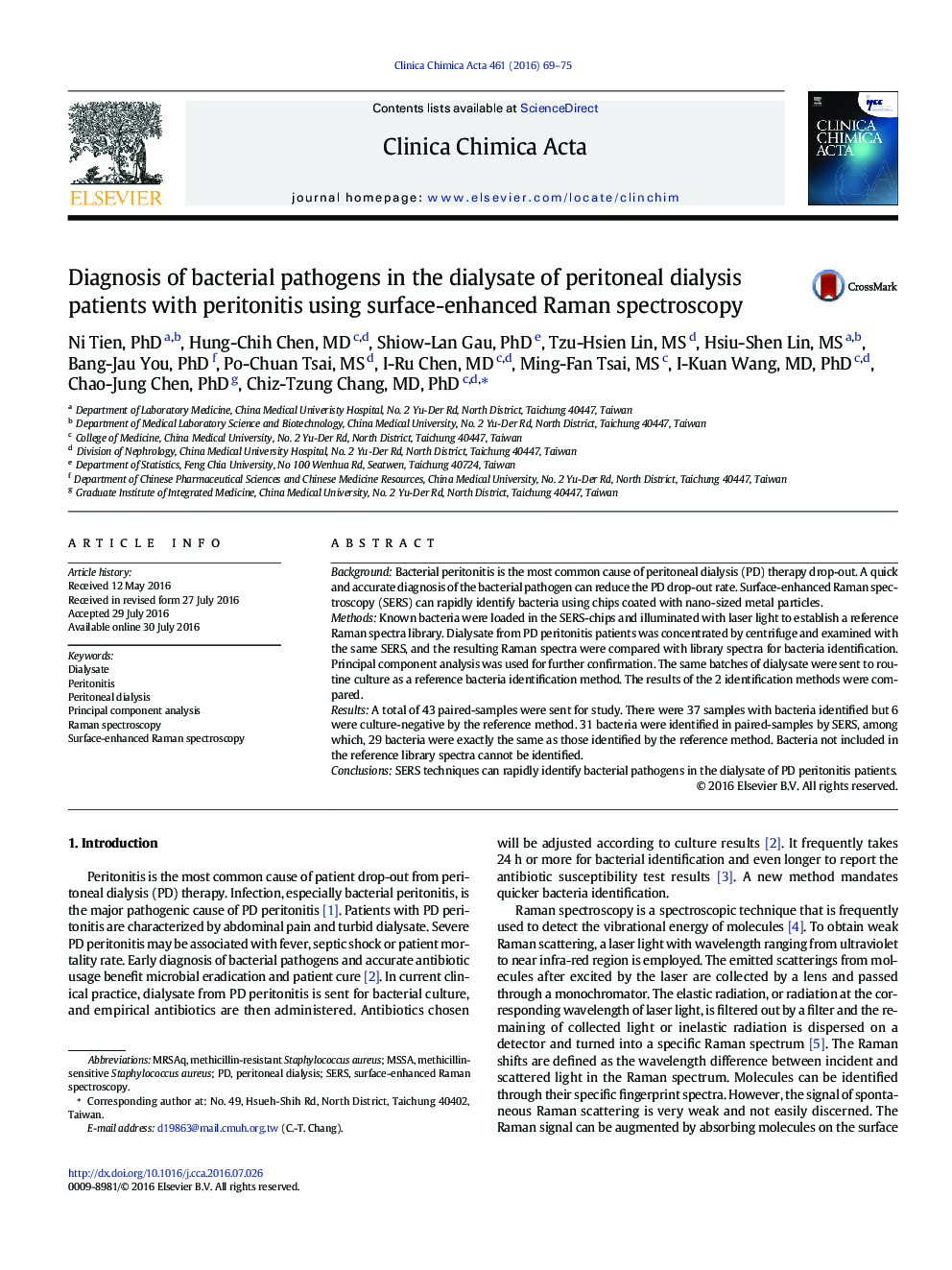| Article ID | Journal | Published Year | Pages | File Type |
|---|---|---|---|---|
| 1965071 | Clinica Chimica Acta | 2016 | 7 Pages |
•Every bacterial genus has its own unique Raman shift spectrum.•Raman spectra of bacteria can be identified quickly by using computer software.•Antibiotic sensitivity of bacteria can be tested by surface-enhanced Raman spectroscopy.
BackgroundBacterial peritonitis is the most common cause of peritoneal dialysis (PD) therapy drop-out. A quick and accurate diagnosis of the bacterial pathogen can reduce the PD drop-out rate. Surface-enhanced Raman spectroscopy (SERS) can rapidly identify bacteria using chips coated with nano-sized metal particles.MethodsKnown bacteria were loaded in the SERS-chips and illuminated with laser light to establish a reference Raman spectra library. Dialysate from PD peritonitis patients was concentrated by centrifuge and examined with the same SERS, and the resulting Raman spectra were compared with library spectra for bacteria identification. Principal component analysis was used for further confirmation. The same batches of dialysate were sent to routine culture as a reference bacteria identification method. The results of the 2 identification methods were compared.ResultsA total of 43 paired-samples were sent for study. There were 37 samples with bacteria identified but 6 were culture-negative by the reference method. 31 bacteria were identified in paired-samples by SERS, among which, 29 bacteria were exactly the same as those identified by the reference method. Bacteria not included in the reference library spectra cannot be identified.ConclusionsSERS techniques can rapidly identify bacterial pathogens in the dialysate of PD peritonitis patients.
